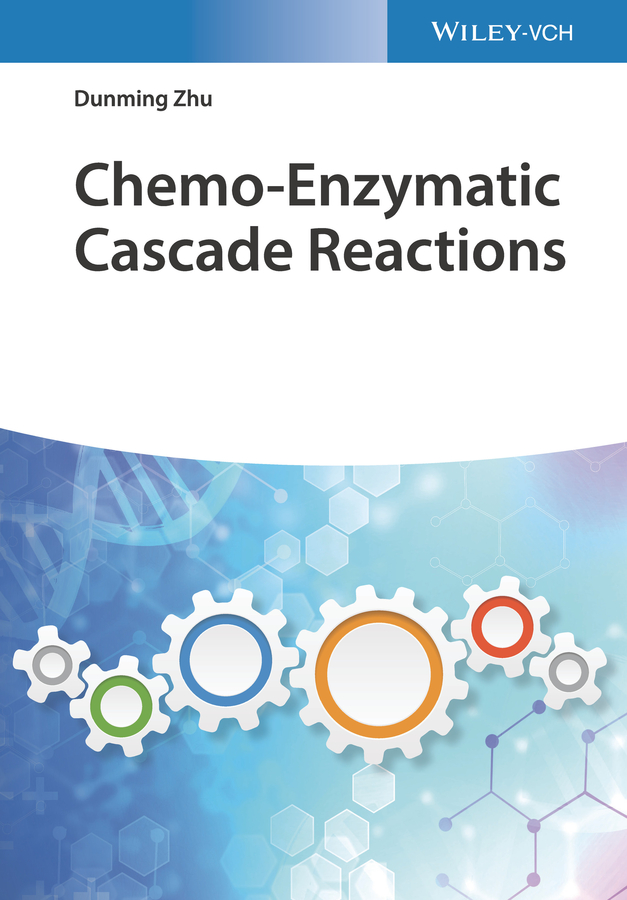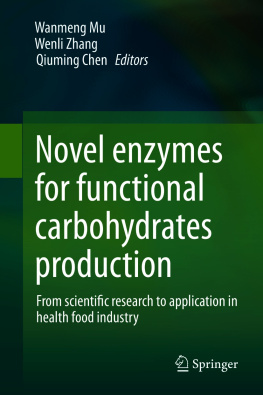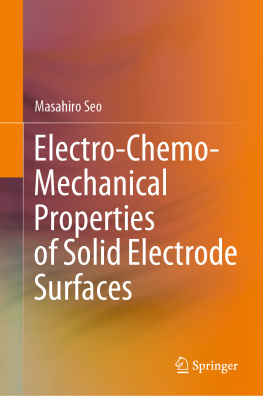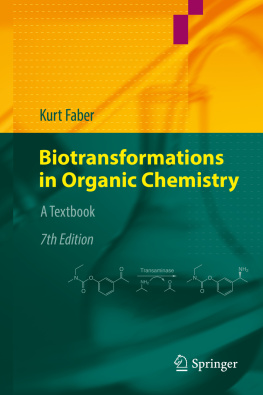
Table of Contents
List of Tables
- Chapter 6
List of Illustrations
- Chapter 1
- Chapter 2
- Chapter 3
- Chapter 4
- Chapter 5
- Chapter 6
- Chapter 7
Guide
Pages
Chemo-Enzymatic Cascade Reactions
Dunming Zhu

Author
Prof. Dunming Zhu
Tianjin Institute of Industrial Biotechnology
Chinese Academy of Sciences
32 Xi Qi Dao
Tianjin Airport Economic Area
300308 Tianjin
China
Cover
Gear wheels picoStudio/Shutterstock,
Medicine abstract background
Zoezoe33/Shutterstock
All books published by Wiley-VCHare carefully produced. Nevertheless, authors, editors, and publisher do not warrant the information contained in these books, including this book, to be free of errors. Readers are advised to keep in mind that statements, data, illustrations, procedural details or other items may inadvertently be inaccurate.
Library of Congress Card No.:
applied for
British Library Cataloguing-in-Publication Data
A catalogue record for this book is available from the British Library.
Bibliographic information published by the Deutsche Nationalbibliothek
The Deutsche Nationalbibliothek lists this publication in the Deutsche Nationalbibliografie; detailed bibliographic data are available on the Internet at < http://dnb.d-nb.de >.
2021 WILEY-VCH GmbH, Boschstr. 12, 69469 Weinheim, Germany
All rights reserved (including those of translation into other languages). No part of this book may be reproduced in any form by photoprinting, microfilm, or any other means nor transmitted or translated into a machine language without written permission from the publishers. Registered names, trademarks, etc. used in this book, even when not specifically marked as such, are not to be considered unprotected by law.
Print ISBN:978-3-527-34451-2
ePDF ISBN:978-3-527-81427-5
ePub ISBN:978-3-527-81428-2
oBook ISBN:978-3-527-81426-8
Preface
After doing research in chemical catalysis for more than 10 years, I accidently entered the field of biocatalysis, that has trapped me until now. I began to realize that biocatalysis can offer solutions to some synthetic problems which the traditional chemistry may not be able to solve, and combination of chemical reaction with biotransformation provides unprecedented tools for the needs in fine chemical industry. I have witnessed the rapid expansion of this research field and their applications to solve real industrial problems. In our own endeavor, we recently developed some microbial catalysts that effectively transform phytosterols, a renewable material and by-product of oil industry, into a series of key intermediates for the production of steroidal medicines. They have been implemented at industrial scale to replace the previous synthetic routes from diosgenin which requires a large amount of field to grow the plant and waste-producing process to extract it from the plant. When integrated into the synthesis of steroidal drugs, these bioprocesses are leading to dramatic improvement in production efficiency and environmental impact for steroidal pharmaceutical industry.
While organic chemical reactions have made major contributions to the production of fine chemicals that meet our growing needs in materials, pharmaceuticals, food additives, cosmetics among others, they also have adverse effects on the environment. Advances in biotechnology offer new avenues for addressing these problems faced by chemical industry. In this context, integration of biotransformation with chemical reaction will lead to novel green synthetic processes for the production of the desired chemical products, because they provide complementary advantages in the molecular construction and functional group transformation.
Next page










